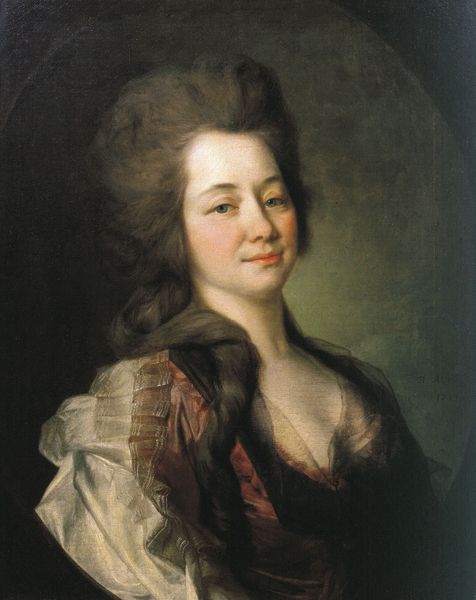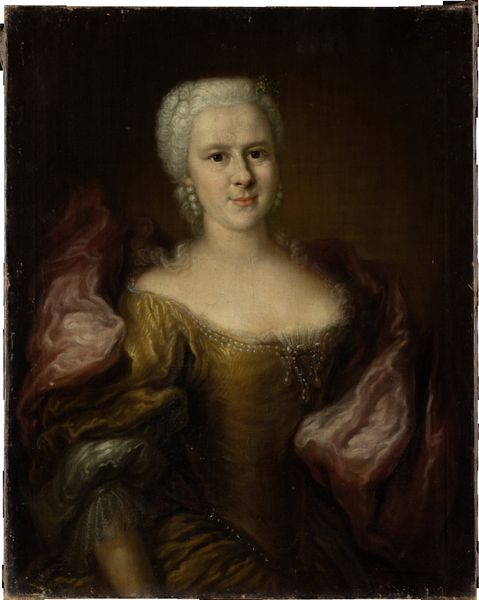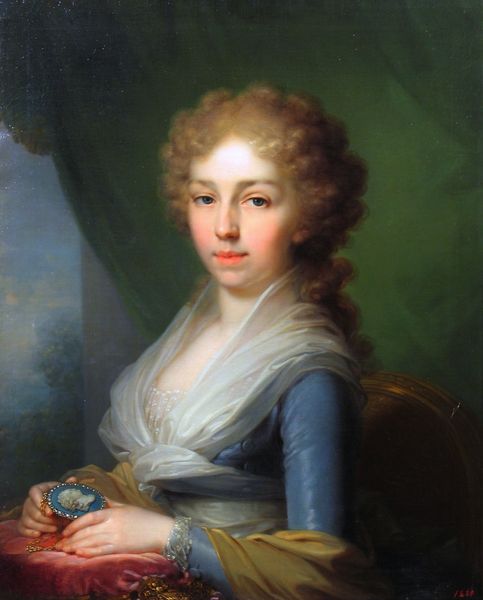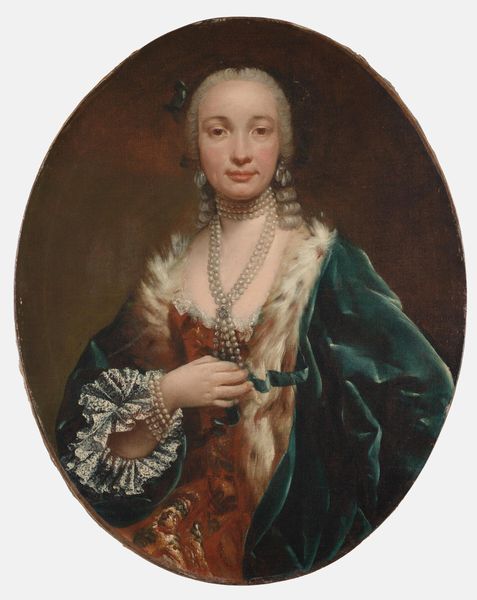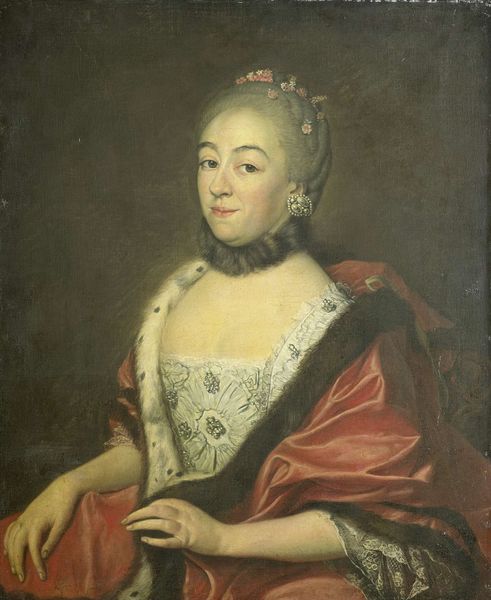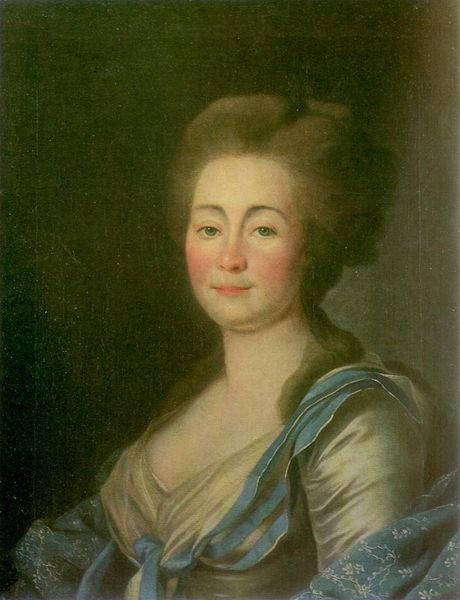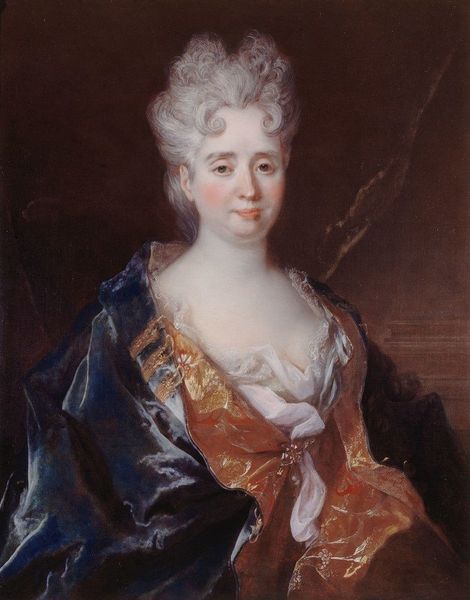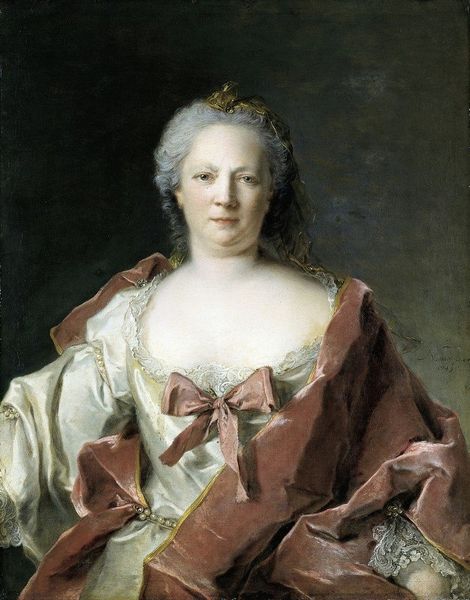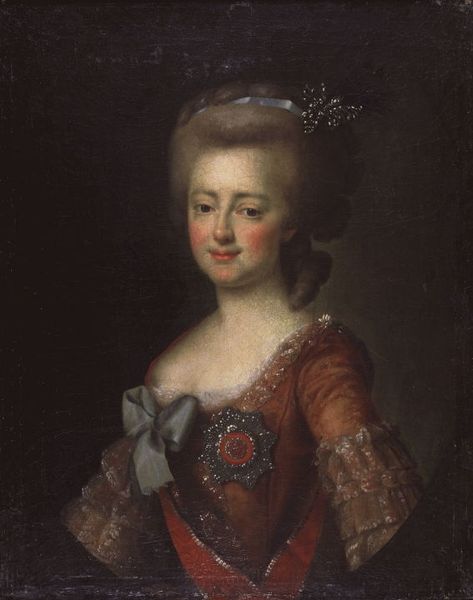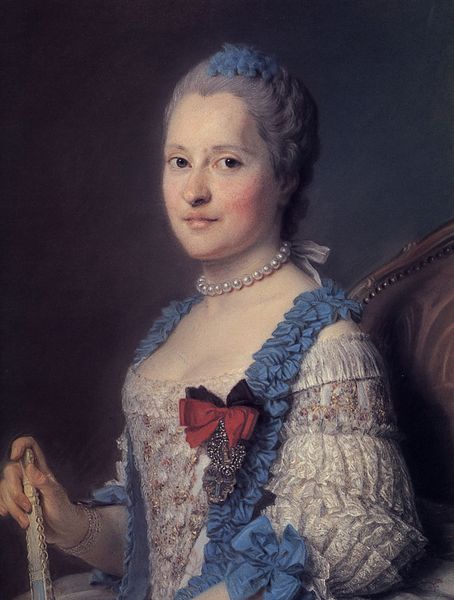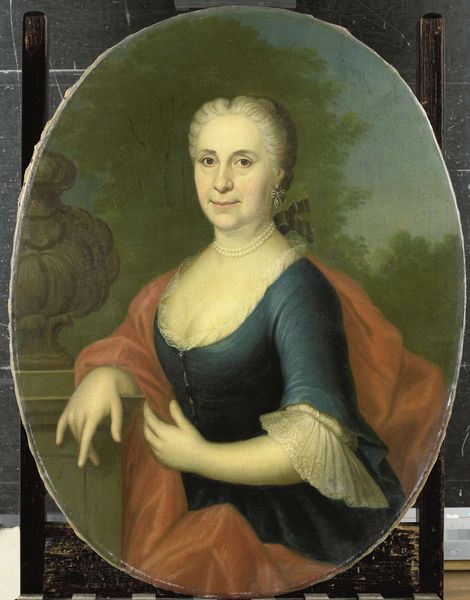
Portrait of Anna Maria van Hogendorp (1655-1727). Second Wife of François Leydecker c. 1690
0:00
0:00
painting, oil-paint
#
portrait
#
baroque
#
painting
#
oil-paint
#
history-painting
#
realism
Dimensions: height 86 cm, width 67 cm, depth 6 cm
Copyright: Rijks Museum: Open Domain
Curator: This captivating oil painting, likely created around 1690, portrays Anna Maria van Hogendorp, who became the second wife of Françoys Leydecker. What are your immediate thoughts on it? Editor: I'm struck by its air of delicate melancholy. The muted tones, the subject's gentle gaze, even the wilting roses, contribute to this sense of quiet sorrow, and something about the dark, uniform backdrop adds to this emotional intensity. Curator: Absolutely. When we consider this portrait in light of her role as a second wife in a patriarchal society, and without information about Anna Maria herself, this image provides very limited information regarding the experiences of 17th century women. What do we see in this painting that reveals something of her time? Editor: The roses certainly stand out to me. A single rose, presented so deliberately, usually symbolized love, beauty, or secrecy. But note the slightly drooping blooms, a nod to transience, perhaps, or a subtle acknowledgement of fleeting beauty. Curator: Very interesting. These Vanitas elements prompt us to consider concepts of wealth and temporality reflected in Dutch Golden Age art, but from a different perspective by including her representation and placing emphasis on what is important in portraying her specifically. Editor: Exactly. Even the small watch detail positioned above her head catches my eye. Is this supposed to serve as a *memento mori*, as you were saying? It may suggest social pressures felt in Anna Maria’s lifetime. Curator: An excellent point, these combined clues open so many pathways to exploring gendered social status. The visual rhetoric here uses symbolic conventions and informs our interpretation of its narrative, and our role as modern-day art appreciators to better assess historical subjects such as Anna Maria. Editor: This image certainly pushes back on passive consumption of Golden Age paintings as evidence and urges thoughtful reevaluation of what portraits tell us. Thanks for sharing! Curator: The pleasure was all mine. Hopefully our exchange has provided you with just as much to think about when approaching paintings such as these.
Comments
No comments
Be the first to comment and join the conversation on the ultimate creative platform.
